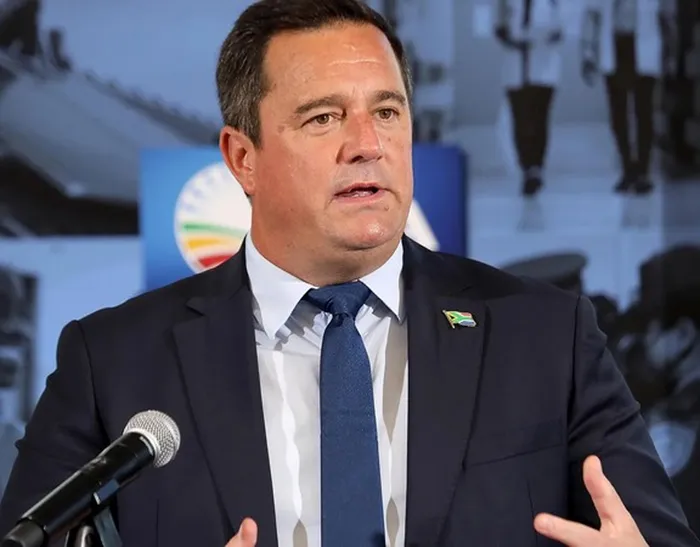South Africa's livestock industry under siege: Steenhuisen's call for urgent reforms

Minister John Steenhuisen delivers the opening address at the Foot-and-Mouth Disease Indaba, outlining urgent reforms to strengthen South Africa’s livestock disease response system.
Image: File
In a hard-hitting address at the Foot-and-Mouth Disease (FMD) Indaba on Monday, Minister of Agriculture John Steenhuisen painted a stark picture of South Africa’s livestock industry under siege, not just from disease outbreaks but from a “broken system” plagued by policy failure, institutional fatigue and outdated response models.
Speaking to a packed venue of scientists, veterinarians, agricultural leaders and government officials, Steenhuisen warned that if the country continues with its current fragmented approach, it will remain vulnerable to future outbreaks and economic devastation.
“What we saw was a response system stretched to its limits, with breakdowns in communication, severe delays in vaccine availability, confusion over movement controls, and an alarming lack of readiness at several levels of government,” said Steenhuisen.
“Farmers were unsure of the measures. Provinces were uncertain of the protocols. And while the virus spread, trust in the state’s capacity to respond continued to erode.”
The minister identified four urgent areas of reform: regionalisation, vaccine security, infrastructure development, and investment in research and development.
He announced the appointment of senior veterinarians Dr Emily Mogajane and Dr Nomsa Mnisi to lead the development of a national regionalisation framework that will define disease control zones, improve provincial coordination, and align with constitutional mandates.
“The failure to regionalise is not due to a lack of veterinary science. It is due to a lack of institutional coordination, legal clarity and capacity,” he said, emphasising that trade partners penalised the entire country despite outbreaks being limited to specific zones.
Addressing vaccine shortages, Steenhuisen called for private sector co-investment in a national vaccine bank. “We were compelled to import vaccines from Botswana just to mount even a partial response. This is unsustainable,” he said.
“If you want predictability, you must also invest.”
Infrastructure was also in the spotlight, particularly in FMD protection zones. Steenhuisen announced new fiscal allocations to build local feedlots and abattoirs in Limpopo, KwaZulu-Natal and Mpumalanga, aiming to curb illegal livestock movement that undermines disease control. “These facilities will provide alternatives to illicit trade. They will create rural jobs,” he said.
Looking ahead, the minister underscored the importance of animal science and climate resilience. “We must elevate the Agricultural Research Council to the same level as its international counterparts,” he said, proposing partnerships with institutions like the University of Pretoria’s Biosecurity Hub and leveraging statutory levies for R&D.
But the message was not only one of critique, it was a rallying cry for unity and action.
“This Indaba is not about apportioning blame. It is about fixing what has gone wrong,” Steenhuisen said.
“We must break the cycle of reactive containment and move toward proactive, coordinated disease management.”
IOL News
Related Topics: